From the Ground Up – Landmass Wrap Up Example
This first section was vitally important, though sometimes a little dry, because it allows a strong setup of the following sections and creates a strong foundation to build on.
Remember though, that you’re not bound by your prior choices, and can easily adapt what you have created to better suit the vision that you are creating. Often, when people see the detailed worlds and settings that I have created, often behind the scenes of games or stories that I am writing, they ask why any of it matters. And, to a fair point, they are correct in respect to a number of the topics, that is, until they become vital. mountains to traverse, a great drought in the savanna to lead raiders and bandits westward, a cold and bitter set of years pushing explorers South. Lumber, pastureland, livestock, natural resources. All these stem from the setup that was created in the early stages of the world, and have carried their weight into the story, lending credence and continualism. Lets take a look at the place I’ve been creating, and apply some of the concepts over the past few weeks.

Here is the map, as it is currently.
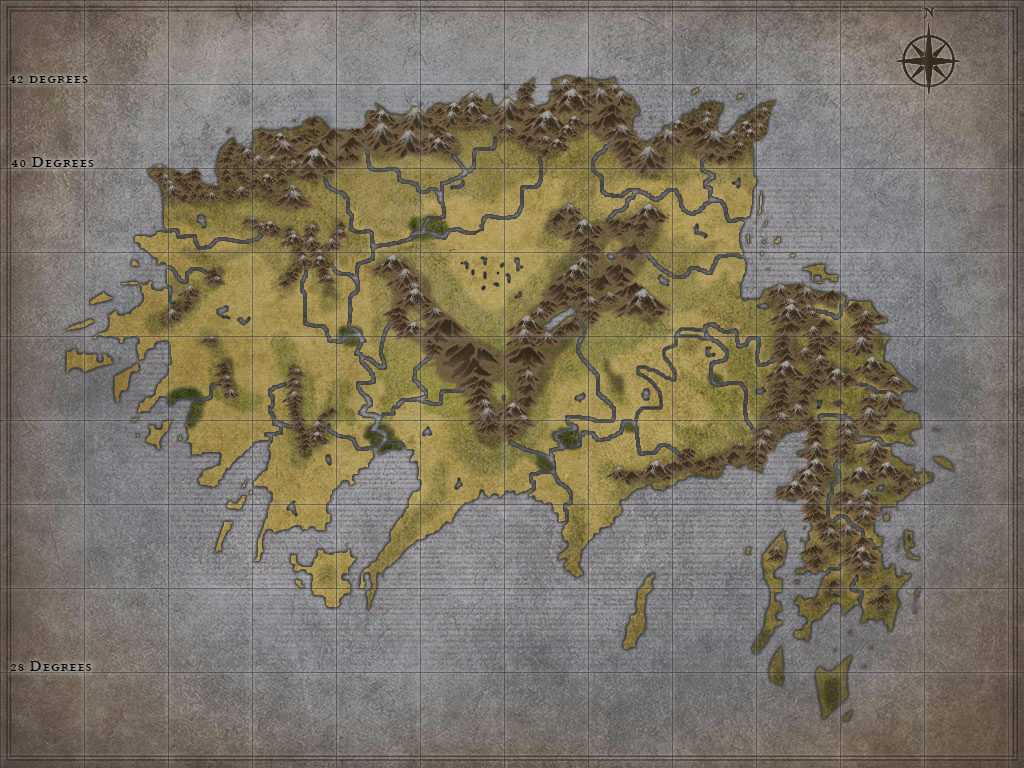
I’ve made changes since the wind currents map, but that is how its supposed to work – you alter your creation as you go along. Make sure you are the one providing a guiding hand. Especially with the ease of creation on programs like Inkarnate, its very easy to make, and unmake changes.
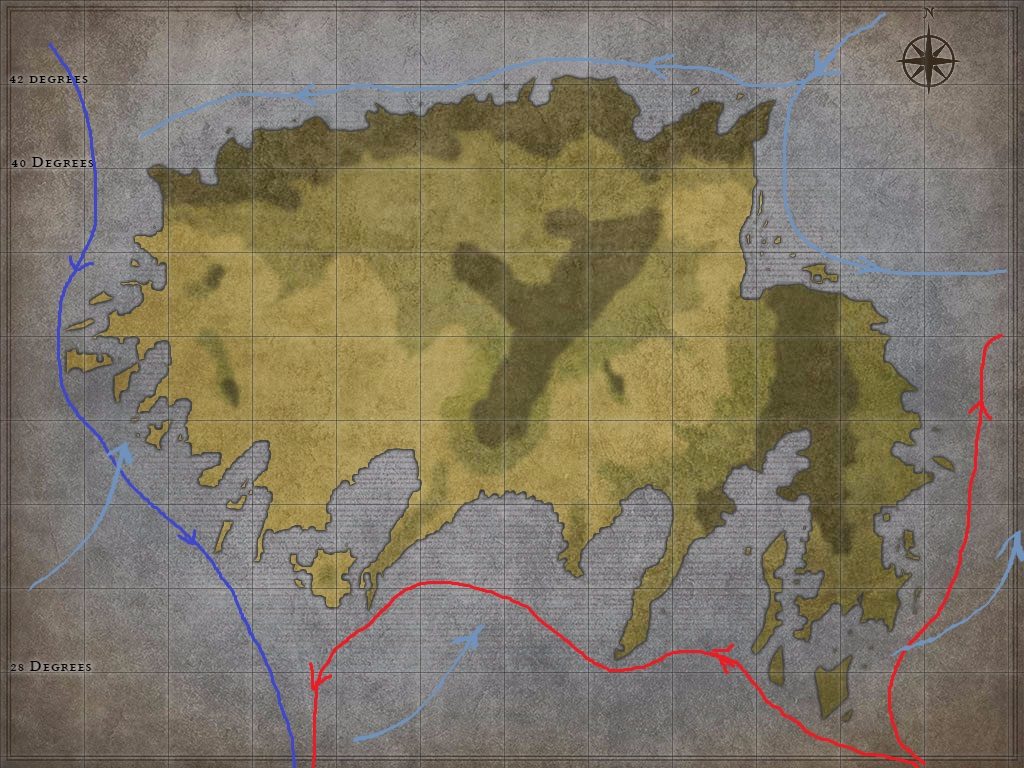
The greater quantity of mountains game me a more realistic setting. though many places have grasslands and forested areas, they are rare and often in the center of large continents, not on the edge, where I was looking at it. Everywhere in the world, cold water travels along the west coast, and warm water along the East. Being in the southern and northern hemispheres determines which way the water flows. With this continent placed in the northern hemisphere, the cold water would be making its way south to the equator to warm up, and the warm water would be flowing north to cool at the northern latitudes. Additionally, 40° is the intersection of the ocean currents, so there would likely be a cool current coming from the north-west that bounced off the Island and split, joining up with the cooler water flowing south in the west, and chilling the waters to the east and forcing them out into the sea.
For the wind currents, there would be the winds crossing from the west to the east. This would bring the cold air from the western sea inland, making the climate a bit cooler, but it would also bring the warm air from the south onto the island. Its likely that large bay to the far left is a center of many weather patterns and wracked by storms, and will be a cool place to put some interesting climates.
This sets the stage for us adding a ton of mountains in order to direct that rain and climate a bit more.
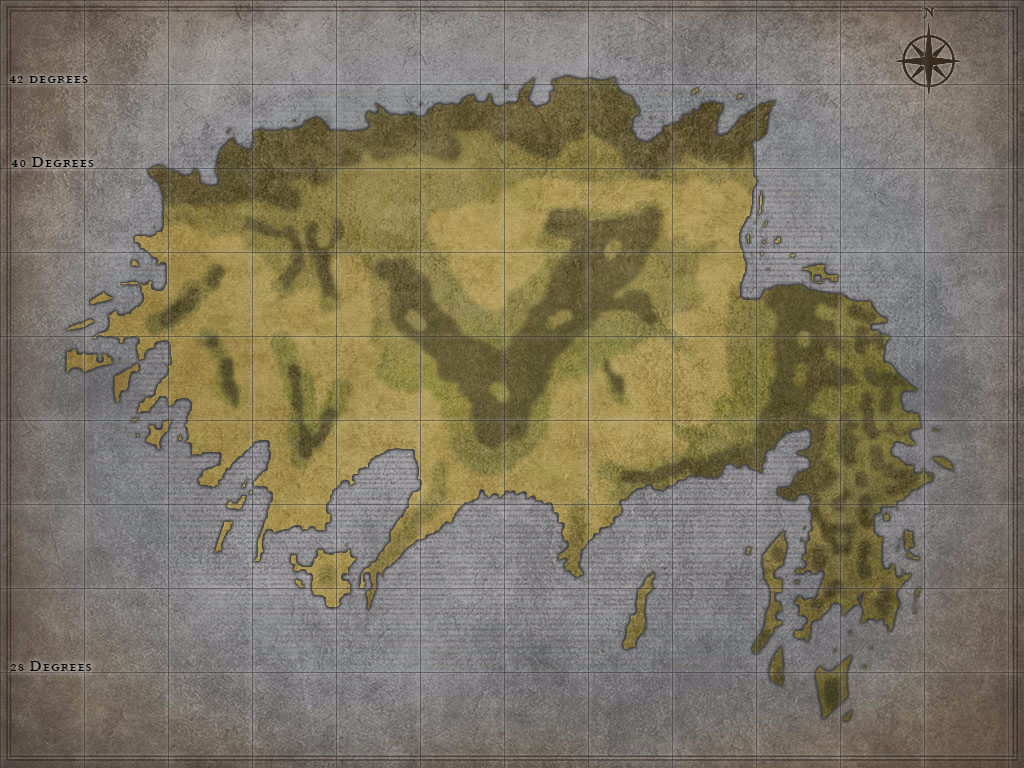
With the landmass, mountains, and currents, this place is likely to be pretty typical, climate wise. The central mountains and steppes will keep most of the rain out of the upper valley, making it a likely candidate for a cool, fairly dry savanna, maybe even an uplands type of Steppe. Lets see how that plays out.
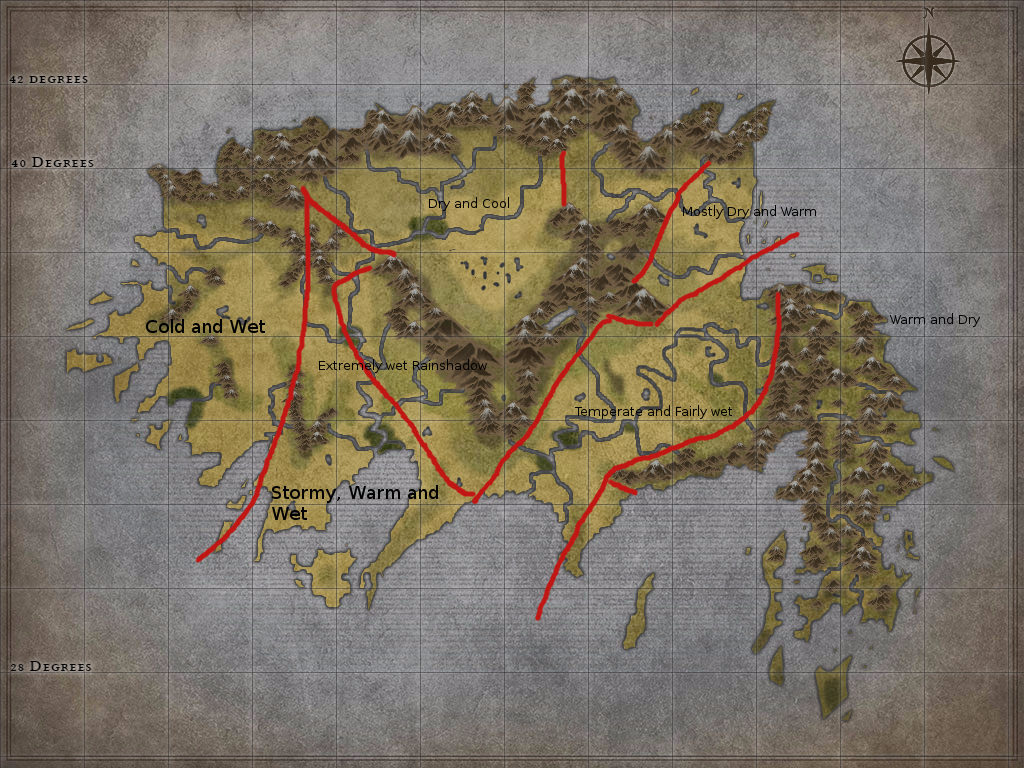
The west coast is cold and Temperate, where the cool water is affected by the westerly winds. It is likely a large, primeval forest – Towering oaks, strong Maples, Redwoods, that sort of vegetation, Its likely extremely dense, with the wet and temperate climate aiding decomposition, but not enabling it so fast it might as well not exist. To the north and west, were the rains likely stop along the mountains are likely to be areas of even greater vegetation, and the areas behind the small mountains in the center are likely to be a little drier.
To the east of that area is a the storming lands I mentioned. Likely to be plains as it is forest, this is a strange and wonderful place where the warm wetness keeps it mild all year round, without the snows and ice of the western brethren. If it weren’t for the constant storms, it would likely be a pleasant place to live. It will be a patchy, rainy forest and plains, with fertile ground for those willing to work it. Against he mountains to the north of the stormlands, though, is likely to be as near a temperate rainforest as their can be in this area. With constant rain and storms drenching that portion, plants are likely to grow tall and powerful. The area to the west of the mountains, in addition to being pelted with storms and lightning, will likely be ravaged by floods as the storms that don’t make it across the range slough down the hills and inundate the land below, likely making it rather flatter than the westerly temperate forest.
Further, even, east we find the wetter, temperate forest and grasslands. While the West receives an average amount of rain, the warm waters being pushed ashore here are likely to result in a lot more rain, and more seasonally. This looks like a great place for your standard temperate forests, great clearings and standard, pleasant seasons. Inlike the dryish and warm weather out west, the water and sun are plentiful here and create a fantastic temperate woodland setting.
The Mountains to the west are likely to be dry, sometimes extremely so, as all the water from the air leaves as the clouds try to climb over the mountains. What little water they do get is from the rivers and waterways that drain the area. The coastal area will likely be a bit wetter and easier to live in, due to local climates going against the grain somewhat with all of the bays and islands.
Finally, Across the top we have four separate areas. The central cold steppes, which are likely pretty free from precipitation and lacking of great soil, an arid place to live even in the best of times. The Mountains themselves are likely Alpine, supporting little life on their barren and volcanic slopes. The central-western region, conveniently unlabeled, is very likely to be a very dry area and a bit warmer temperature than the Valley to the west. It won’t be a complete desert but it will not be a pleasant place to exist, what with little rain, few plants and even less animals.
Finally, the area edging to the north will likely be a small grassland, devoid of most rain, except seasonally. Without enough water to support the larger plant life, the grasses will flourish.
This is the final biome map, with each area Delineated by color to make it a bit easier to look at
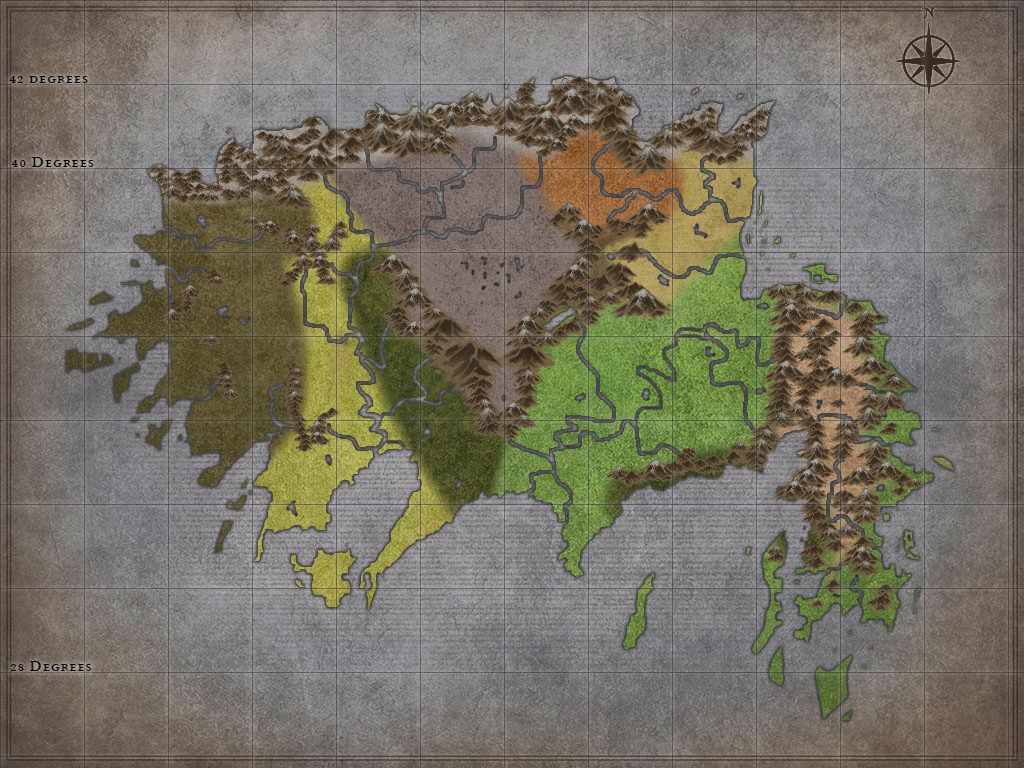
Next week, I’ll start on Section 2: Populating with animals, and we will see how they interact and fill in the gaps of the biome and climate that have been left. We should even finish off with Humans and Humanoids, if done right!
Thanks for looking!

